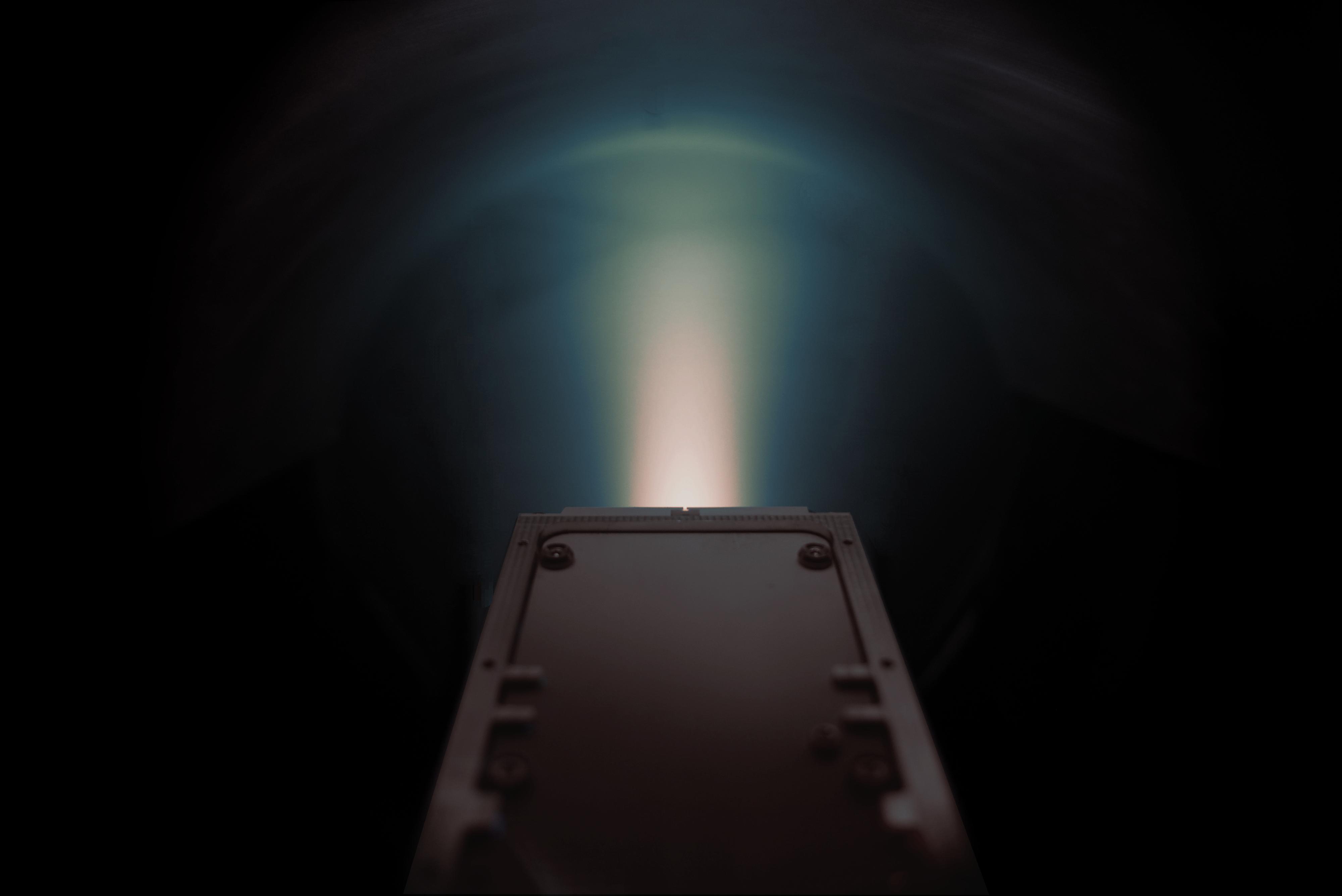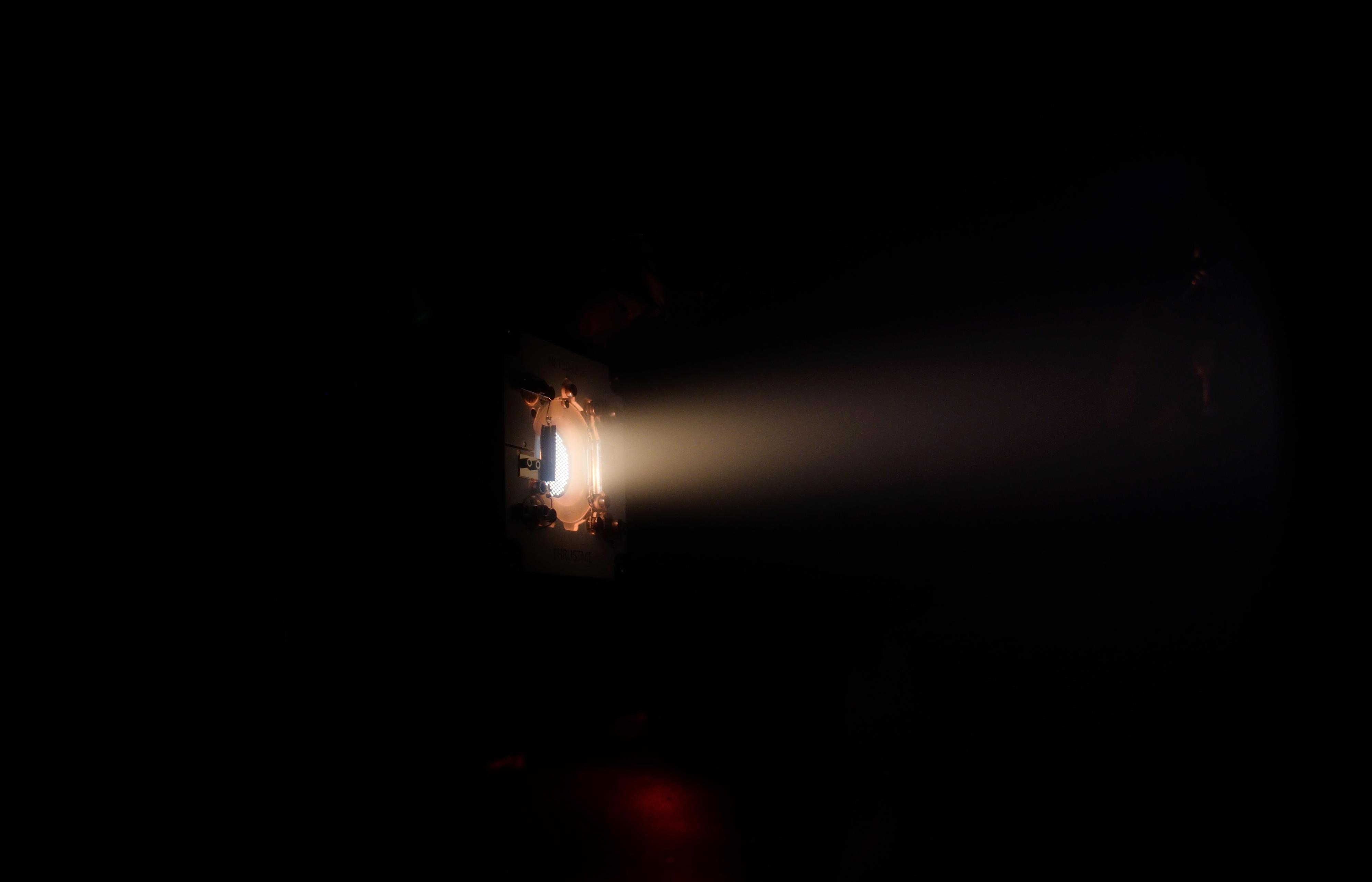Promising new electric iodine thruster passes key test in orbit
Electric thrusters that use iodine as a propellant could soon find their way onto lots of spacecraft.

A new electric thruster that blasts out iodine has now been successfully tested in orbit, a milestone that could help lead to significantly tinier, simpler, cheaper and higher-performance engines for satellites and spacecraft, a new study reports.
Conventional rockets use chemical reactions to drive propulsion. In contrast, electric thrusters produce thrust by using electric power to accelerate propellants such as electrically charged ions away from a spacecraft.
Electric propulsion generates much less thrust than chemical rockets, making it too weak to launch a spacecraft from Earth's surface. But electric thrusters are highly efficient at producing thrust, given the small amount of propellant they carry. This makes them very useful for spacecraft that are already in space.
Related: Superfast spacecraft propulsion systems (images)

Currently, xenon gas is the propellant of choice in electric thrusters. However, xenon is rare, making up less than 1 part per 10 million in Earth's atmosphere. It is also expensive, at about $3,000 per 2.2 pounds (1 kilogram). Moreover, the gas requires bulky pressurized tanks, as well as complex networks of pipes, valves and pumps to shuttle it around a propulsion system.
A possible alternative to xenon that researchers have explored over the past 20 years is iodine, the same element often packaged with table salt and used as an antiseptic. Iodine is cheaper and more abundant than xenon and can be stored unpressurized as a solid that changes directly into a gas when heated, potentially enabling significant miniaturization and simplification. Previous research has shown electric thrusters using iodine can prove more efficient than ones employing xenon in ground-based tests.
However, iodine presents challenges of its own when it comes to propulsion. For example, iodine is highly corrosive, posing a potential danger to electronics and other systems onboard spacecraft. In addition, vibrations during launch and spacecraft motion once in orbit can make solid iodine break into pieces, which may damage the propulsion system, among other problems.
Get the Space.com Newsletter
Breaking space news, the latest updates on rocket launches, skywatching events and more!
Now scientists have for the first time launched an iodine-based electric thruster into space and showed that it can help propel a spacecraft in orbit.
"We show that iodine can be safely used in space, bringing an option for propulsion systems onboard even the smallest spacecraft," said study lead author Dmytro Rafalskyi, chief technical officer and co-founder of space propulsion company ThrustMe, which is headquartered near Paris.
The new electric thruster, the NPT30-I2 from ThrustMe, fits within a single package about 4 inches by 4 inches by 4 inches (10 centimeters by 10 centimeters by 10 centimeters) in size and about 2.6 pounds (1.2 kg) in mass. It served as the propulsion system for a 44-pound (20 kg) cubesat, the Beihangkongshi-1 satellite operated by Chinese satellite company Spacety, which launched into space on a Long March 6 rocket on Nov.
6, 2020.
Ground radar stations confirmed that the NPT30-I2 helped the miniature satellite maneuver in orbit. All in all, the new thruster let out puffs of iodine that cumulatively boosted the cubesat's altitude by more than 1.8 miles (3 kilometers).
The new findings show that iodine is not only a viable propellant, but can also achieve nearly 50% more efficient propulsion than xenon, because of factors such as how iodine is easier to electrify than xenon. The company has opened a production line for these new thrusters and has already delivered more than 10 of them to satellite manufacturers worldwide, Rafalskyi said.
"Our team of roughly 10 engineers and a few PhDs reached something that was a dream of the propulsion community for decades," Rafalskyi said.
To deal with the problem of corrosion, the scientists developed ceramics and polymers to protect metal components within the satellite. To keep the iodine from shattering, they strengthened it by embedding the iodine crystals in a porous ceramic block.
"We are pioneers in using iodine, but that doesn't mean that we don't encourage others to switch to this propellant," Rafalskyi said. "We are very open about our research results, and look forward to seeing more and more propulsion manufacturers converting to iodine."
The new thruster could help tiny satellites and large networks of satellites, such as SpaceX's Starlink megaconstellation, perform maneuvers in space, such as avoiding collisions, staying in orbit and changing from one orbit to another.
"Currently, the majority of the smallest satellites don't have any propulsion options due to the complexity, cost and risks associated with the use of standard propulsion systems," Rafalskyi said. "Iodine enables powerful propulsion for even the smallest satellites due to inherent properties of iodine. In-space maneuverability becomes accessible to any user, including universities and small startups."
In the future, the researchers want to scale up their research to cover large Earth-orbiting satellites as well as deep space missions, Rafalskyi said.
The scientists detailed their findings in the Nov. 18 issue of the journal Nature.
Originally published on Space.com. Follow us on Twitter @Spacedotcom or on Facebook.
Join our Space Forums to keep talking space on the latest missions, night sky and more! And if you have a news tip, correction or comment, let us know at: community@space.com.

Charles Q. Choi is a contributing writer for Space.com and Live Science. He covers all things human origins and astronomy as well as physics, animals and general science topics. Charles has a Master of Arts degree from the University of Missouri-Columbia, School of Journalism and a Bachelor of Arts degree from the University of South Florida. Charles has visited every continent on Earth, drinking rancid yak butter tea in Lhasa, snorkeling with sea lions in the Galapagos and even climbing an iceberg in Antarctica. Visit him at http://www.sciwriter.us









